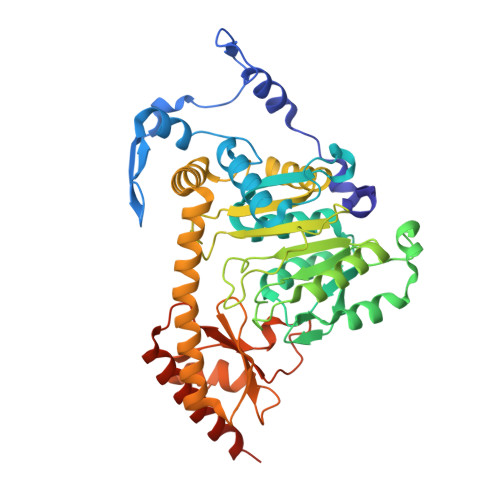Structure-Based Design of Irreversible Human KAT II Inhibitors: Discovery of New Potency-Enhancing Interactions.
Tuttle, J.B., Anderson, M., Bechle, B.M., Campbell, B.M., Chang, C., Dounay, A.B., Evrard, E., Fonseca, K.R., Gan, X., Ghosh, S., Horner, W., James, L.C., Kim, J.Y., McAllister, L.A., Pandit, J., Parikh, V.D., Rago, B.J., Salafia, M.A., Strick, C.A., Zawadzke, L.E., Verhoest, P.R.(2013) ACS Med Chem Lett 4: 37-40
- PubMed: 24900560
- DOI: https://doi.org/10.1021/ml300237v
- Primary Citation of Related Structures:
4GE4, 4GE7, 4GE9 - PubMed Abstract:
A series of aryl hydroxamates recently have been disclosed as irreversible inhibitors of kynurenine amino transferase II (KAT II), an enzyme that may play a role in schizophrenia and other psychiatric and neurological disorders. The utilization of structure-activity relationships (SAR) in conjunction with X-ray crystallography led to the discovery of hydroxamate 4, a disubstituted analogue that has a significant potency enhancement due to a novel interaction with KAT II. The use of k inact/K i to assess potency was critical for understanding the SAR in this series and for identifying compounds with improved pharmacodynamic profiles.
Organizational Affiliation:
Pfizer Worldwide Research and Development , Neuroscience Medicinal Chemistry, Eastern Point Road, Groton, Connecticut 06340, United States.















